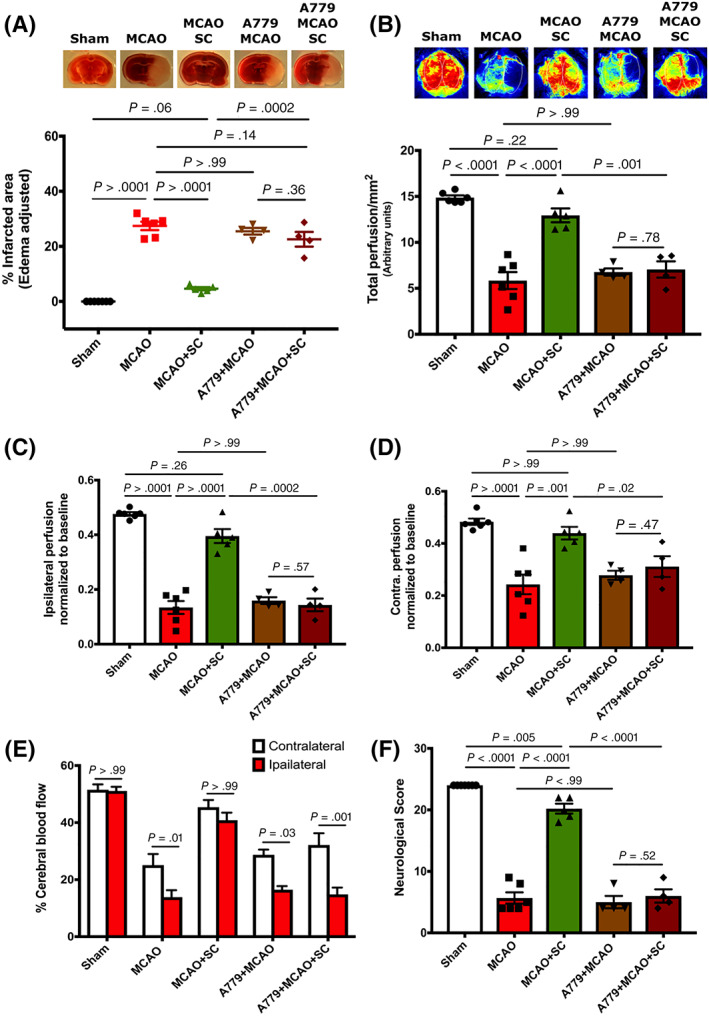FIGURE 7.

The masR pathway contributes to the ACE‐2‐mediated protection in the MCAO model. Protective potential of hPMSC via masR pathway was tested in the MCAO mice pretreated with masR antagonist (A779; 80 mg/kg i.p). No significant differences were observed in the (A) infarction area (TTC staining; not significant [NS], P = .36) of the MCAO+A779 treated IP with hPMSC (n = 4) compared to untreated MCAO+A779 (n = 4) group. Laser Speckle imaging did not reveal any significant changes in (B) total (NS, P = .79), (C) ipsilateral (NS, P = .57), and (D) contralateral (NS, P = .47) blood perfusion of the MCAO+A779 treated IP with hPMSC (n = 4) compared to untreated MCAO+A779 (n = 4) group. Two‐way analysis of variance (ANOVA) showed significant disturbances in blood perfusion between ipsilateral and contralateral hemispheres of MCAO (*P = .01), A779‐MCAO (*P = .03), and hPMSC‐treated A779‐MCAO (***P = .0008) groups (E). There were no significant differences in the neurological scores (NS, P = .52) of the MCAO+A779 treated IP with hPMSC (n = 4) compared to untreated MCAO+A779 (n = 4) group (F). All graph data show the means ± SEM. ACE‐2, angiotensin converting enzyme‐2; hPMSCs, human placenta mesenchymal stem cells; MCAO, middle cerebral artery occlusion; TTC, 2,3,5‐triphenyltetrazolium chloride
